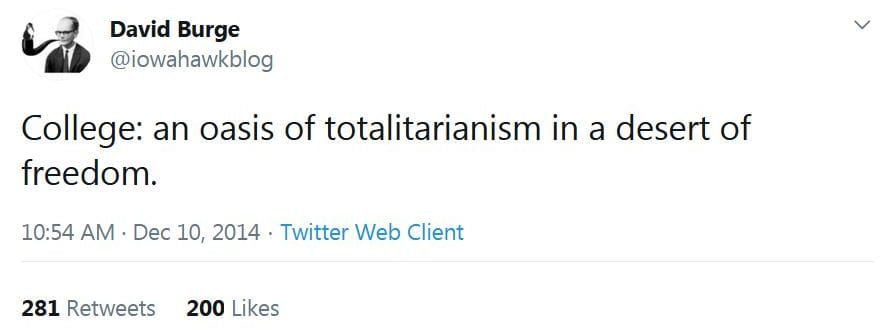DISPATCHES FROM THE EDUCATION APOCALYPSE: The Child Soldiers of Ethnic Studies.
The nuclei of Middle East education at American universities are the Middle East and Islamic studies centers. There are around 50 such centers distributed across the country, depending on how you count them. Columbia University alone hosts three: the Center for Palestine Studies, the Middle East Institute, and the Sakip Sabanci Center for Turkish Studies. These centers are no strangers to controversy. For at least two decades, scholars and policymakers alike have decried the centers’ whitewashing of Islamic extremism and anti-Israel bias. Yet the centers have remained mostly untouched, and a few new ones have even appeared.
Throughout their history, these centers have taken money from both the federal government and foreign governments. For instance, archived documents retrieved by the National Association of Scholars show that Georgetown’s Center for Contemporary Arab Studies (CCAS) relied heavily on foreign countries in its early days during the 1970s. Arab countries contributed two-thirds of the funding needed to help Georgetown leaders reach their $6.1 million fundraising goal for CCAS. During this same time, the foreign governments of Oman, Libya, and the United Arab Emirates (UAE) contributed more than $1 million for various professorships at CCAS. Today, the center is one of about a dozen Middle East National Resource Centers (NRC) that receive more than $3 million in funding from the federal government. Harvard University’s Center for Middle East Studies started in the 1950s with funding from the Ford and Rockefeller foundations and then-American-owned oil company Aramco. Soon thereafter, it received funding from the federal government as an early NRC. Beginning in the 1980s, the center helped secure tens of millions of dollars in funds primarily from Turkey and Saudi Arabia both for its own faculty and for affiliated programs at Harvard.
* * * * * * * *
The University of Texas at Austin’s Center for Middle East Studies, along with other NRCs at the school, used federal funds in 2021 to host a critical race literacy workshop, where K-12 teachers “(Un)learn[ed] patterns of whiteness in literacy teaching.” The university claims on its website that the event supported “instructional goals for literacy standards for the State of Texas.” Or consider a toolkit on “Women and Gender in the Middle East” produced by the University of North Carolina at Chapel Hill’s Center for Middle East and Islamic Studies. Their set of readings directs students to a YouTube video of an overview of Edward Said’s Orientalism, produced by a channel called “Invictapalestina.” For those students who prefer a book, the toolkit points them to an anthology of Arab feminist writing, including by Columbia University professor Lila Abu-Lughod, who, ironically, in the past has criticized the “focus on gender-based violence” in Arab and Islamic countries as it “leave[s] aside the violence of states … like Israel.”
Middle East faculty at top universities train the next generation of anti-Israel and anti-American activists by training K-12 teachers. For instance, New York University’s Hagop Kevorkian Center for Near Eastern Studies partners with Jordan-based nonprofit Global Nomads Group to host an annual fellowship program for grades 7-12 teachers. During the fellowship, teachers create curricula to teach students about the Middle East.
New Utrecht High School teacher Nathan Floro’s curriculum, to take one example, would ensure students have a “basic understanding of orientalism and be able to critique various media through a post-colonial lens.” NYU also funded Newton Public Schools teacher David Bedar, whose fellowship at NYU focused on redeveloping college-level content for high school students on the Israeli-Palestinian conflict. The Committee for Accuracy in Middle East Reporting and Analysis (CAMERA), throughout 2018 and 2019, acquired Bedar’s curriculum materials and found in a detailed analysis that the course favored the Palestinian over the Zionist narrative of the conflict by distorting and omitting facts.
Read the whole thing. As Iowahawk has said:

